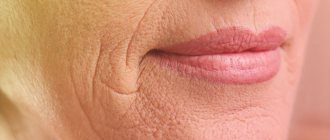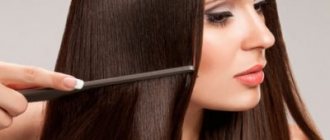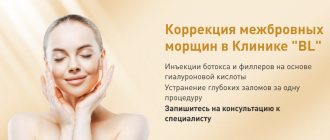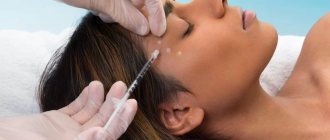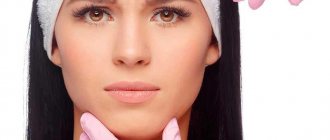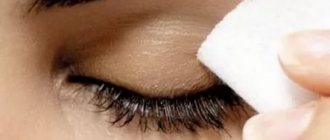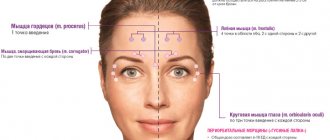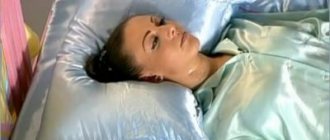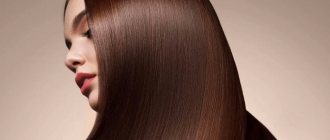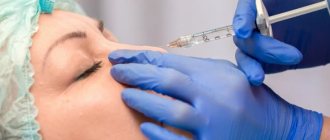Botox is a botulism neurotoxin that has undergone purification and pre-treatment and has a fairly weak concentration. The cosmetic effect of the drug was discovered in 1993, and two years later it became widely used not only in cosmetology, but also as a component of the treatment of many diseases.
Botox injections are a non-surgical corrective option for smoothing and eliminating expression lines and age-related wrinkles. In order to understand how Botox works, you need to understand the principles of the injection mechanism.
How does Botox work?
An anatomical characteristic of the facial muscles is the attachment of the muscles. At one end they are attached to the bone, and at the other they are, as it were, woven into the skin tissue. That is why, when they contract, the skin of the face moves, which, when repeated many times, leads to the appearance of facial folds and wrinkles.
Facial muscles also have nerve fibers that transmit impulses from the brain to the muscle itself, thereby causing it to spasm. Botox, administered intramuscularly, begins to penetrate the fibers, thereby blocking access to impulses. Muscles that have not received the necessary signal stop actively contracting, freeze, and the skin stops stretching and shrinking.
Injection results
After a course of injections, wrinkles on the face are significantly smoothed out, the condition of the facial skin noticeably improves, and this effect can last up to six months.
Many women wonder how quickly Botox works? Visually, the effect of the drug can be seen on your face after five or seven days; it is during this period that the muscles can completely relax. The maximum result is achieved after two weeks, but it is worth remembering that each time indicator also depends on the individual characteristics of the body. After an examination, a cosmetologist will be able to determine how often you should inject Botox in your case.
I'm embarrassed to ask: 12 important questions about Botox
What is Botox and what botulinum toxins are on the market?
Botox is the most famous brand of drugs based on botulinum toxin, which is a protein neurotoxin produced by the bacteria Clostridium botulinum. This is a drug that disrupts the transmission of impulses from the nerve ending to the muscle, thereby relaxing it.
Contrary to popular belief, preparations based on this substance are widely used to solve a wide range of medical problems, and not just in cosmetology. For example, there are drugs based on it to treat muscle spasms, excessive sweating and some types of headaches.
Until recently, in Russia there were six registered drugs based on botulinum toxin type A. A few months ago, another interesting promising drug received registration. I'll tell you a little about each.
Botox, which has become a household name, was one of the first to be introduced into aesthetic medicine by the Irish company Allergan. Registered as a drug for the correction of facial wrinkles in aesthetic medicine. Very popular among specialists and patients.
Dysport - produced by the French company Ipsen Pharma, differs in conversion into units, it has more indications, recommended for the correction of hyperhidrosis (excessive sweating). Everyone loved Dysport no less than the previous toxin.
Xeomin is a product of the German company Merz, considered the most purified toxin; storage conditions do not require refrigeration, which is very convenient for clinics and specialists.
Lantox is a toxin from LIBP - Lanzhou Institute of Biological Products, China. It has the most extensive indications for the correction of facial wrinkles.
Relatox - a remedy for, Russia. The first Russian drug based on botulinum toxin. It has an enhanced formula and a long-lasting effect.
Botulax - developed by Hugel Inc. This South Korean drug came to us later than everyone else, but this did not prevent it from taking a strong position in the aesthetic medicine market.
Most recently, the Russian drug Myotox received registration, the first drug in Russia in a reconstituted form, that is, it is already diluted in a bottle.
South Korea was the first to develop such a drug, but due to the difficulty of registration in our country, we could not count on it. Now we have a Russian analogue - we will test it.
When can (and should) inject botulinum toxin?
You can start administering drugs based on botulinum toxin in aesthetic medicine from the age of 18, if there are necessary indications for this. Therefore, do not wait for deep skin creases to form, contact in a timely manner: the sooner, the better.
How painful is this procedure?
The procedure itself can hardly be called painful: the drug is injected with an insulin syringe with a thin needle. But men don’t like to endure discomfort once again - it’s a fact. The pain threshold for men and women is the same, but there is a difference in psycho-emotional status. Men are more sensitive to injections than women. When the drug is administered, they often begin to wrinkle and tighten, which is why sometimes the needle can even fly out. You just need to be patient a little.
How long does the procedure take?
This is a very fast manipulation. After we have consulted the patient and assessed his facial activity, we proceed directly to the procedure, which takes no more than 15-20 minutes. That is, this is the so-called lunch break procedure.
What effect can you expect from Botox injections and how long does it last?
The main aesthetic effect is the smoothing of facial wrinkles in the area between the eyebrows (the so-called “proud wrinkle”), forehead, and around the eyes. Sometimes specialists work with the lower third of the face, correcting the chin and neck area.
The effect lasts from 4 to 6 months, this is written in the instructions for the drugs.
Sometimes in patients who are applying for a similar procedure for the first time, as well as in younger audiences, the effect can last up to 8 months.
What are the features of the Botox procedure specifically for men?
Today, men are increasingly seeking procedures for the correction of facial wrinkles with drugs based on botulinum toxin type A. However, certain features do exist.
- Facial muscles in men are more developed, which is why wrinkles on the skin appear more strongly. In addition, men's eyebrows are on a horizontal line (that is, they do not have such a pronounced bend as women's), and the heads of the eyebrows in the area between the eyebrows droop.
- Men are not recommended to experiment with raising their eyebrows: correction while maintaining a horizontal line looks more natural.
- Requests for correction of wrinkles in the eye area should be treated with caution: this always requires additional discussion with the patient. There are NOT always indications for this. The main risks are worsening hernial protrusions in the lower eyelid or increased swelling around the eyes.
How often should Botox injections be done?
In the classic version, Botox injections are done twice a year - no earlier than 6 months after the last procedure. Typically, patients look at themselves in the mirror, note that their facial expressions have become more active again, and, if necessary, come for a second appointment. In men, the effect of Botox injections wears off on average faster than in women. This is largely due to the fact that their muscles are more powerful and they have greater facial activity.
Is botulinum toxin addictive?
There is no addictive effect. All processes that occur as a result of Botox injections are reversible: over time, innervation and muscle activity return. The main thing is to follow the appointment schedule and not come for the procedure earlier than 4-6 months later. There is such a thing as the production of antibodies. If you do Botox more often than necessary, the body will react accordingly and the patient will become less sensitive to the toxin. Therefore, the recommended frequency is once every six months.
Why does Botox, as they say, not work for some people and can this be detected in advance?
We call this phenomenon insensitivity to the toxin. Indeed, 2−4% of the entire population have this feature, and such patients do occur. The reasons for this are still unknown. It is also not possible to identify this in advance: this can only be revealed after the procedure has been carried out. At the same time, we try several variants of drugs: sometimes it happens that there is no sensitivity to one drug and the desired effect can be achieved by using one of the analogues, which we discussed in detail at the very beginning. If after two attempts with different drugs there is still no effect, you can call it a day. By the way, in men, lack of sensitivity to the toxin is more common, and no one can explain this. Even at an appointment with a specialist, when we assess the patient’s facial activity, we cannot determine that Botox “will not work” for him.
When does the effect of the procedure begin to appear?
This doesn't happen instantly. Only after five days does the toxin begin to act, and we can fully see the result only after 2 weeks. That is, to ensure that the procedure was successful, at least 14 days must pass. By the way, the fact of lack of sensitivity to the toxin can also be detected no earlier than after 2 weeks.
Is there a list of restrictions that must be followed before and after the procedure?
“Before” - here, perhaps, there is only one requirement: it is not advisable to drink alcohol the day before.
“After” - but here there really is a whole series of restrictive measures:
- do not visit the bathhouse or sauna for the first 2 weeks: high temperatures reduce the effect of the toxin and we may not get the desired effect;
- limit sports and yoga to 3-5 days: it is extremely important to avoid standing upside down;
- You cannot take a hot shower immediately after the procedure;
- do not take a horizontal position for the first 4 hours after the procedure, that is, do not lie down;
- do not drink alcohol for 3 to 5 days;
- do not come for the procedure immediately after completing antibiotic therapy: there is a certain group of antimicrobial drugs that weaken the effect of the toxin or negate the effect of its administration. If you have had antibiotic therapy in the recent past, we recommend that you avoid the procedure and return after 2 weeks.
How to understand that the procedure was carried out correctly by a specialist?
If your wrinkles have smoothed out in the areas where correction was carried out, if you have limited movement in the muscles that the specialist relaxed, and at the same time your upper eyelids and eyebrows have not drooped, you have not seen double, or one or both eyes have not “closed” - consider that the procedure was completed successfully.
Undesirable effects periodically occur after the use of a toxin, which are associated with the peculiarities of its mechanism of action. For example, swelling of the eyelids, headaches, asymmetry associated with the gradual effect of the drug. As a rule, they level out within 2-3 weeks.
It happens that the patient does not know about some of his diagnoses, which can cause unwanted side effects during the procedure. For example, myosthenia. If Botox injections are given for this disease, the eye may close - we call this eyelid ptosis. This is reversible. If ptosis does occur and the eyelid is slightly closed, we remove this by prescribing certain medications that reduce the effect of botulinum toxin, as well as with the help of physiotherapeutic procedures.
However, we remember: we get the full picture only after 2 weeks, which means there is no point in sounding the alarm ahead of time and calling the doctor in a panic if 14 days have not passed yet.
It happens that after 2 weeks the effect is insufficient or a slight asymmetry appears - this can be solved by additional injection of the drug.
How is Botox removed from the body?
The drug is contained in the body for about a day, then it completely disintegrates into individual elements, and its activity ceases. Botox is excreted from the body through the kidneys as metabolites.
There is a misconception that the drug has a cumulative effect after each injection. The mechanism of the active activity of Botox and its subsequent disintegration is obvious; the drug does not leave the slightest fraction of its content and, moreover, does not have a cumulative effect. It is excreted in full, without causing any negative effects on human health.
How often can Botox be done?
The frequency of injections should, of course, be determined by a cosmetologist. In the big picture, the question: “How often can you inject Botox?” specialists, as a rule, respond with a standard scheme:
- second injection after four months;
- after 12 months - two injections every six months;
- after the next three or four years, only one injection is given.
In any case, the drug should be administered only after the muscles have restored their active activity by at least half. The time for repeated Botox injections should be strictly determined by the cosmetologist after receiving tests from a preliminary examination of the patient.
Contraindications
Botox is a drug, and therefore its use has not only advantages, but also contraindications.
Non-surgical Botox correction is prohibited in the following cases:
- increased degree of sensitivity to the drug;
- severe muscle weakness or any other disorder of the neuromuscular system;
- hemophilia and other blood diseases;
- viral infections;
- diseases of internal organs during the period of exacerbation of the disease;
- inflammation of the skin in places where injections are planned;
- During pregnancy and breastfeeding.
Optimist philosophers associate the appearance of wrinkles with the achievement of wisdom, while pessimists and most women associate the appearance of wrinkles with the onset of old age. Many ladies do not want to give in to age and make every possible effort to achieve this. But, unfortunately, sometimes disputes with nature end in victory for the latter; even the most modern cosmetics do not help. In this case, Botox injections come to the aid of women, which will help smooth out treacherous folds and wrinkles for a significant period of time.
Forehead Botox - at what age? How to avoid expression lines
As for Botox, it's a different story. Often young 20-year-old girls have such active facial expressions that with the naked eye you can see how a wrinkle is laid and formed between the eyebrows or on the forehead. And it is clear that by the age of 30 she will definitely appear there.
In this case, I would start by using creams with peptides, which are good at blocking these muscles, but at the same time allow you to maintain “control of the situation.” If you inject Botox, then the girl will not record the moment when she wrinkles her forehead or moves her eyebrows: the muscles relax so much that it is simply impossible to do this. And if you use a cream with peptides, then every time she tries to frown, she will feel a clear obstacle.
If in two or three months these measures do not wean her from too active facial expressions, of course, you need to inject Botox. And it is likely that once will be enough: within six months the bad habit will disappear. And then all that remains is to simply maintain this result with the same drugs with peptides, so as not to forget about the problem and not to relax (that is, in this case, on the contrary, not to strain).
Some psychologists who are interested in cosmetology (as well as cosmetologists who are interested in psychotherapy) conduct such an experiment with patients who want to get rid of the manner of frowning and moving their eyebrows towards the bridge of their nose. They put sensors on their foreheads and show them a beautiful film about nature. As soon as the patient wants to express emotions by wrinkling her forehead, the sensor is triggered - and instead of beauty, a gray grid appears on the screen. Ten sessions give a 100% result.
That is, the habit of tense forehead muscles, like the habit of slouching, can be controlled without any Botox. But it takes time and a strong desire to get rid of it.
Yes, it is easier for some, more difficult for others. There are people who have only six attachment points for the frontalis muscle. There will be almost no wrinkles on their forehead even at 70 years old. And there are those who have 46 of these points - and who already at the age of 25 have an accordion on their forehead in seven rows. If such a person comes to a cosmetologist, yes, you need to inject Botox. And then there is the question of medical skill. If the doctor is good, he will do everything right.
